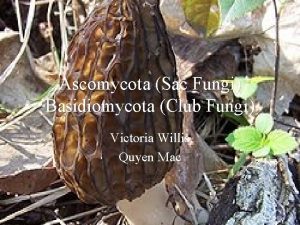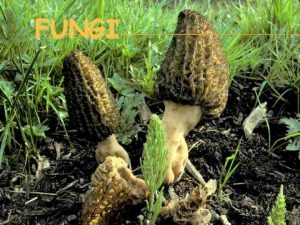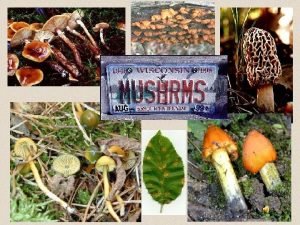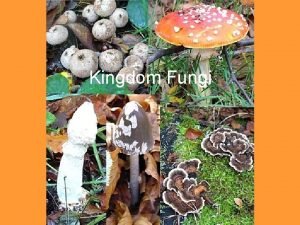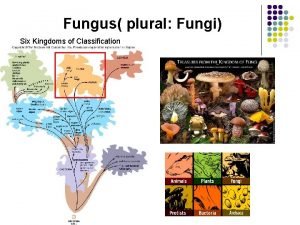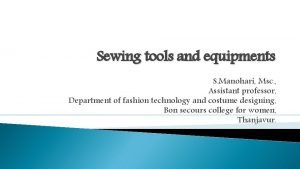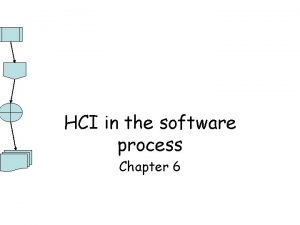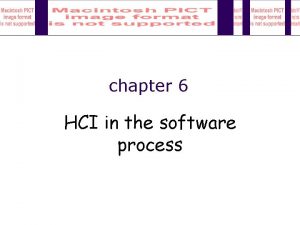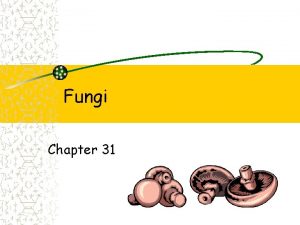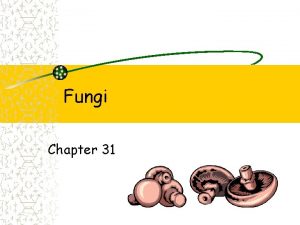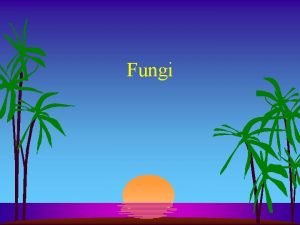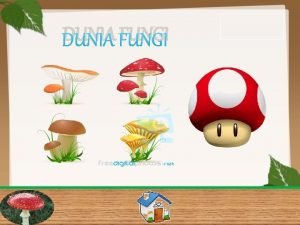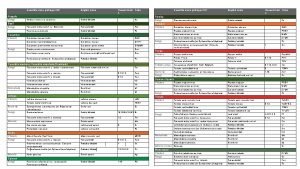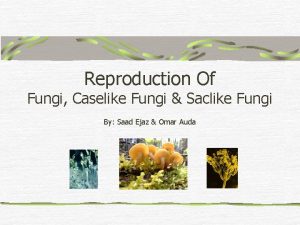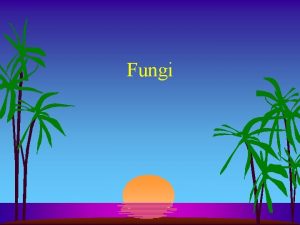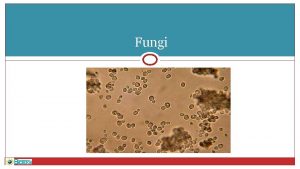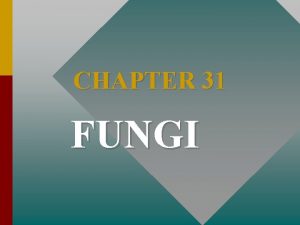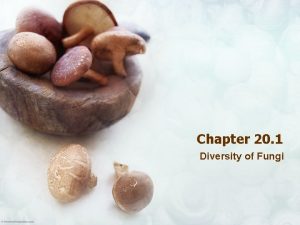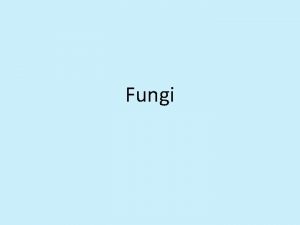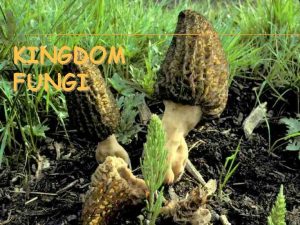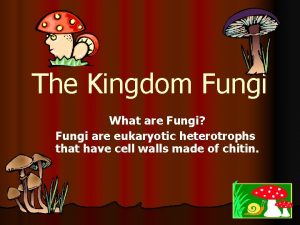Fungi and Your Food Disclaimer This file intended














































- Slides: 46

Fungi and Your Food *****Disclaimer: This file intended for educational purposes only. All image credits for those that require citations (i. e. not in the public domain and/or taken by the author) are listed on the final slide.



What are Fungi? • • • Eukaryotic Have a cell wall with Chitin Heterotrophic Absorptive nutrition Produce spores Many have a network of tubes (hyphae) form a mycelium Mycelium Tube-like Cell structure

Fungi are their own kingdom Plants Animals gi n Fu Barton et al. Evolution

Fungi are not plants • Plants make their own nutrition (sugar) from light and water via photosynthesis. • Fungi are more similar to and related to animals than they are to plants, and fungi must obtain nutrients from other organisms.

Heterotrophy • Obtain nutrition by absorbing nutrients found or produced by other organisms. Corn Pathogen (Huitlacoche) Animal Horn decaying fungus Cheese associate (Blue cheese)

What do Fungi do? Many ecological roles: • Plant pathogen • Decompose • Mycorrhizae – root associates • Animal pathogens

Fungi and Food • Plant Pathogens • Food Spoilage Impact on plant based food production • Mycorrhizae • Fermentation Fungi as foods • Edible Mushrooms

PLANT PATHOGENS

Plant Pathogenic Fungi • Fungi are the most important (=biggest) group of plant pathogens. • Pathogens are infectious agents that cause disease in their hosts. • There are more than 8, 000 known fungal plant pathogens.

Key Concept #1 The production of almost all the plantbased food that you eat is impacted by at least one major fungal disease (and therefore prevention).

Top 10 most important plant pathogenic fungi* (and their hosts) 1. Magnaporthe oryzae (Rice, see following slide) 2. Botrytis cinerea (multiple hosts) 3. Puccinia spp. (Wheat) 4. Fusarium graminearum (Cereals) 5. Fusarium oxysporum (Many crops) 6. Blumeria graminis (Wheat and Barley) 7. Mycosphaerella graminicola (wheat) 8. Colletotrichum spp. (Many crops) 9. Ustilago maydis (Corn) 10. Melampsora lini (Flax) *According to Dean et al. 2012 Molecular Plant Pathology

Examples of Plant Pathogens

Rice Blast • Magnaporthe oryzae • Estimated to kill enough rice to feed 60 million people every year. • Resistant to both chemical treatments and genetic modifications to rice

Ergot of Rye • Claviceps purpurea • Causes Ergotism: • Convulsive – seizures, spasms, psychosis, nausea • Vasoconstrictive - gangrene, edema, low blood pres. • Historical significance – St. Anthony’s Fire, Salem Witch Trials Ergotamine Ergometrine Sclerotium of C. purpurea

Painting by Matthias Grünewald of a patient suffering from advanced Ergotism from approximately 1512– 16 CE

Fungicides • Fungicides are chemicals that kill fungi (used in agricultural settings). • Most (non-organic) vegetables and fruits produced in the US have been sprayed with at least one fungicide.

Fungicide Usage (in 2005) Wheat, Corn, Barley, Oats, etc. Phillips Mc. Dougall. 2006. Phillips Mc. Dougall Agriservice Report. Pathhead, Midlothian, Scotland, UK

What types of management practices could limit fungal disease in agricultural crops? • • Fungicides Avoidance of infected sites Crop Rotation Breed host resistance (Traditional or GMO) Irrigation practices Limit Moisture!! Row spacing Timing of planting Biocontrol (Bacteria)

FOOD SPOILAGE

• Food spoilage occurs during post-harvest and storage of crops and foods. • Fungi that cause food spoilage often produce secondary compounds that are active in humans.

Examples of Fungi in Food Spoilage

Aflatoxins • Aspergillus spp. • Some of the most toxic compounds produced by fungi. Carcinogenic! Liver damage and liver cancer. • Contaminate foods before harvest or during storage. • Frequently found in food crops such as peanuts and corn.

Fruit and Bread Molds • Penicillium spp. Produce many types of antibiotics (including Penicillin) • Rhizopus stolonifer

Maple Syrup Fungus • Wallemia sebi • Xerophilic – “Dry loving” • Osmotolerant – can grow in high concentration solutions (high sugar or salt concentrations) Kent Loeffler

MYCORRHIZAE

Key Concept #2 Not all fungi have negative impacts on plants. Many fungi help plant growth or prevent animal herbivory.

Root Associates • A mycorrhiza is a specialized association between a fungus and the roots of a plant. • Nutrients are exchanged between the fungus and the plant: Sugars H 2 O, Micronutrients (e. g. Phosphorus) • Two major types of mycorrhizae exist. One of these types predominate in temperate forests, and the other in grasslands and tropical forests.

Examples of Arbuscular Mycorrhiza in Crop Production

Flax • Flax is used in both food and linen production • Flax is dependent on its mycorrhizal association “Tree-shaped” structures are the fungus growing into flax root cells.

Corn • Studies have shown corn with mycorrhizae show: – Increased salt tolerance – Improvement in low temperature stress

FERMENTATION

Key Concept #3 Fungi have been used in food production for thousands of years.

Examples of Fungi in Fermentation

Yeast • Saccharomyces cerevisae • They are unicellular and some can live in low oxygen environments. • They use sugars and give off carbon dioxide (CO 2) through respiration - this is how yeasts make bread rise. • Bread, wine, beer, etc.

Cheese • Some cheeses are “ripened” using Penicllium and other fungi. • Blue cheese, Camembert, Brie, Gorgonzola, etc.

Other Fermented Foods Meju – Essential Korean Cooking Paste (Aspergillus oryzae) Red Yeast Rice – Tempeh – Fermented Soy Cake (Rhizopus spp. ) Chinese Food Coloring (Monascus)

EDIBLE MUSHROOMS

Agaricus bisporus • Cremini, portobello, baby bella, button mushroom, champignon mushroom. • More than $800 million produced/ year.

Truffles • Edible truffles – Tuber spp. • “Black diamonds” • Harvested using pigs, dogs, or a truffle rake.

“Trufficulture”

Wild mushroom hunting

Key Concepts • The production of almost all the plant-based food that you eat is impacted by at least one major fungal disease. • Not all fungi have negative impacts on plants. Many fungi help plant growth. • Fungi have been used in food production for thousands of years.

Image Credits Slide 2 - By Amanita_muscaria_3_vliegenzwammen_op_rij. jpg: Onderwijsgekderivative work: Ak ccm - This file was derived from Amanita muscaria 3 vliegenzwammen op rij. jpg: , CC BY-SA 3. 0 nl, https: //commons. wikimedia. org/w/index. php? curid=21983879 Slide 3 – Flax seeds By Sanjay Acharya - Own work, CC BY-SA 3. 0, https: //commons. wikimedia. org/w/index. php? curid=5805308 Slide 4 - https: //commons. wikimedia. org/wiki/File: HYPHAE. png Slide 6 - https: //commons. wikimedia. org/wiki/File: Photosynthesis. gif Slide 7 - https: //commons. wikimedia. org/wiki/File: Huitlacoche 2. jpg, https: //commons. wikimedia. org/wiki/File: Bleu_de_Gex. jpg, O. equina by Lairich Rig https: //commons. wikimedia. org/wiki/File: A_fungus_-_Onygena_equina_-_geograph. org. uk_-_920334. jpg Slide 8 – Mycorrhizae Coutesy of Plant Health Care, Inc. , Botrytis on Strawberry - https: //commons. wikimedia. org/wiki/File: Aardbei_Lambada_vruchtrot_Botrytis_cinerea. jpg, Entomophthora - https: //commons. wikimedia. org/wiki/File: 2011 -06 -20_Entomophthora_muscae_(Cohn)_Fresen_204248. jpg Slide 10 and Slide 13 - Botrytis on Strawberry - https: //commons. wikimedia. org/wiki/File: Aardbei_Lambada_vruchtrot_Botrytis_cinerea. jpg Slide 16 - "Claviceps purpurea" by Dominique Jacquin - Dominique Jacquin. Licensed under Public Domain via Commons - https: //commons. wikimedia. org/wiki/File: Claviceps_purpurea. JPG#/media/File: Claviceps_purpurea. JPG Slide 19 - Phillips Mc. Dougall. 2006. Phillips Mc. Dougall Agriservice Report. Pathhead, Midlothian, Scotland, UK Slide 24 – Aspergillus on Corn - https: //www. pioneer. com/home/site/us/agronomy/crop-management/corn-insectdisease/aspergillus-ear-rot/ Slide 25 – Rhizopus – Encyclopedia Britannica 2013. Slide 26 – Wallemia in culture - By Hainguyen 1984 - Own work, CC BY-SA 3. 0, https: //commons. wikimedia. org/w/index. php? curid=25316558 Slide 27 – Glomus arbuscle – Mark Brundrett http: //mycorrhizas. info/resource. html Slide 31 – Flax seeds - By Sanjay Acharya - Own work, CC BY-SA 3. 0, https: //commons. wikimedia. org/w/index. php? curid=5805308

Image Credits (continued) Slide 33 and 38 – Tempeh By Fotoos. Van. Robin from Netherlands - Tempe, CC BY-SA 2. 0, https: //commons. wikimedia. org/w/index. php? curid=7915397 Slide 37 – Camembert CC BY-SA 3. 0, https: //commons. wikimedia. org/w/index. php? curid=653355 Slide 38 – Red Yeast Rice By Fotoos. Van. Robin from Netherlands - Tempe, CC BY-SA 2. 0, https: //commons. wikimedia. org/w/index. php? curid=7915397 Slide 40 – Tom Volk’s fungus of the month - http: //botit. botany. wisc. edu/toms_fungi/apr 2001. html Slide 41 – Truffle hunting w/pig - http: //www. davidlebovitz. com/2010/02/truffle-hunting-in-france/ Fresh Shaved truffles - http: //www. almagourmet. com/store/fresh-summer-truffles-8 -ounce-p 638. html? zenid=74 bd 8 a 6 dcd 6 f 8 c 2543 a 4 f 6 b 7 f 773 b 95 f
 File-file yang dibuat oleh user pada jenis file di linux
File-file yang dibuat oleh user pada jenis file di linux Club fungi definition
Club fungi definition General characteristics of fungi
General characteristics of fungi Fungi
Fungi Difference between logical file and physical file
Difference between logical file and physical file Unit 2 food food food
Unit 2 food food food Food chain food chain food chain
Food chain food chain food chain Fungsi dari create file pada operasi-operasi file (cont.)
Fungsi dari create file pada operasi-operasi file (cont.) Remote file access in distributed file system
Remote file access in distributed file system An html file is a text file containing small markup tags
An html file is a text file containing small markup tags In a file-oriented information system, a transaction file
In a file-oriented information system, a transaction file Fuses and circuit breakers are intended primarily for
Fuses and circuit breakers are intended primarily for Fuses and circuit breakers are intended primarily for the
Fuses and circuit breakers are intended primarily for the Give us your hungry your tired your poor
Give us your hungry your tired your poor Fungi digest food
Fungi digest food Parasitic fungi in humans
Parasitic fungi in humans A specially waxed carbon paper
A specially waxed carbon paper A long uninterrupted speech
A long uninterrupted speech What is intended benefit
What is intended benefit It simulates or animate some features of intended system
It simulates or animate some features of intended system Intended curriculum
Intended curriculum Formality gap in hci
Formality gap in hci Tasmanian births deaths and marriages
Tasmanian births deaths and marriages Who was the intended audience
Who was the intended audience Intended outcome
Intended outcome It is the intended height of the function?
It is the intended height of the function? In her statement (lines 53-54) miss nightingale intended to
In her statement (lines 53-54) miss nightingale intended to Most inhalants are actually intended to be _______________
Most inhalants are actually intended to be _______________ Hippo dbq
Hippo dbq Perfect and imperfect voluntariness example
Perfect and imperfect voluntariness example Intended audience of the declaration of independence
Intended audience of the declaration of independence What is the destructive event or prank the virus delivers
What is the destructive event or prank the virus delivers Who was the intended audience
Who was the intended audience The poster was intended to
The poster was intended to Nebulous in the great gatsby
Nebulous in the great gatsby Your turn next
Your turn next Xml
Xml Intended message
Intended message Denoation
Denoation Intended message
Intended message A humorous scene or speech intended to lighten the mood
A humorous scene or speech intended to lighten the mood Which core capability makes it possible
Which core capability makes it possible Kaylie young
Kaylie young Complications of hydrocephalus
Complications of hydrocephalus Intended audience
Intended audience How did the treaty of versailles affect postwar germany
How did the treaty of versailles affect postwar germany Who is the intended audience?
Who is the intended audience?

